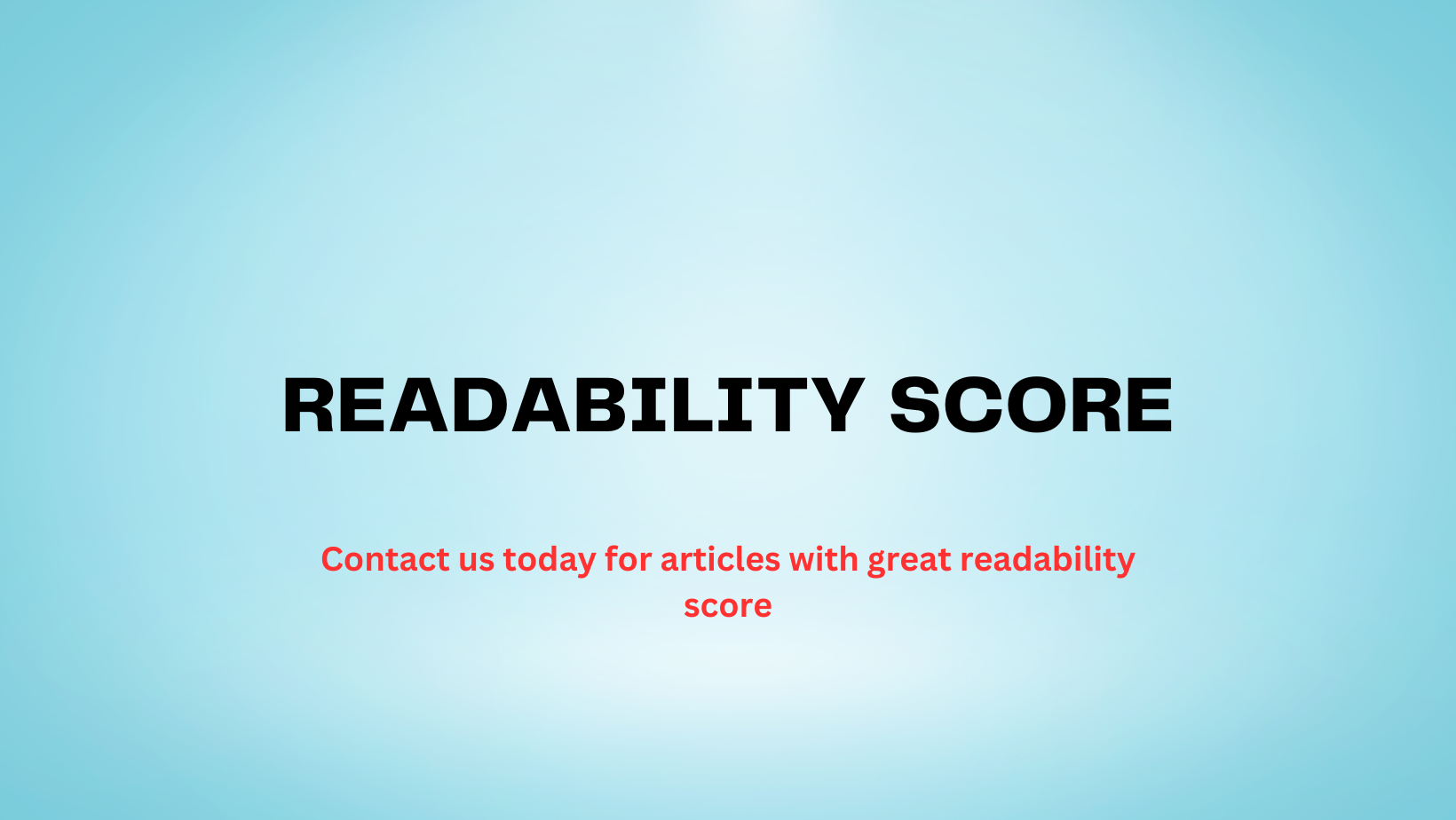
All about readability score
Having trouble creating content that engages your audience and ranks well? What is a “readability score,” and how can it be improved? Find it here! Readability scores determine how well your content is understood and related to your audience. Paragraph structure, word complexity, and sentence length are considered. Improved readability enhances SEO, engagement, and conversions on your website. In this article, you will learn how to calculate readability scores, why they matter, and how to improve them. Let’s get started!
What is a readability score?
An article’s readability score indicates how easy or difficult it is to read. This is a numerical score that indicates the level of reading required. A high readability score indicates easy-to-understand content, while a low readability score indicates difficult-to-understand content.
In addition to sentence length, word complexity, and vocabulary, a readability score considers paragraph structure. By using it, writers can determine how their writing will be perceived by others.
Why is readability important?
Engaging your audience depends on readability. Too difficult content will lose your audience’s interest. Your audience will stay on your website for longer if your content is easy to read and understand.
SEO also requires readability. Readability is a ranking factor for Google. Google will rank your content higher if it is easy to read. Increasing your readability score can raise your search engine rankings, increase traffic to your website, and increase conversions.
How is readability calculated?
Flesch-Kincaid, Gunning Fog, and Coleman-Liau are three formulas for calculating readability. In order to determine the reading level required to understand the content, these formulas take sentence length, word complexity, and paragraph structure into account.
Based on average word counts and average syllable counts, the Flesch-Kincaid formula computes readability. Gunning Fog calculates readability based on the number of words and the complexity of words in each sentence.
Readability and SEO – why it matters
Readability plays an important role in SEO. High-quality, easy-to-read content is rewarded by Google. You may miss out on potential traffic if your content is hard to read.
Readability also affects user experience. Your audience may leave your website if your content is difficult to read. A website’s audience will spend more time on your website if the content is easy to read.
Readability formulas – Flesch-Kincaid, Gunning Fog, and more
There are various readability formulas that you can use to calculate the readability of your content. Here are some of the most common formulas:
Flesch-Kincaid
Using the Flesch-Kincaid formula, readability is calculated by average word count and average syllable count. Formula:
206.835 – (1.015 x (total words / total sentences)) – (84.6 x (total syllables / total words))
Gunning Fog
According to the Gunning Fog formula, readability is calculated by dividing words per sentence by complex words. Formula:
0.4 x ((total words / total sentences) + 100 x (complex words / total words))
Coleman-Liau
Coleman-Liau calculates readability using the average number of words and characters per sentence. Formula:
(5.89 x (total characters / total words)) – (0.3 x (total sentences / total words)) – 15.8
Understanding the different readability levels
Age groups and education levels usually categorize readability levels. Categories include:
● Kindergarten to 3rd grade
● 4th grade to 6th grade
● 7th grade to 9th grade
● 10th grade to 12th grade
● College level
● Graduate level
Knowing the different levels of readability can help you tailor your content. Aim for a readability level of 10th to 12th grade if your audience is college students.
Improving readability in your writing
Engaging your audience and ranking well in search results require readability in your writing. To make your writing more readable, follow these tips:
Keep it short
Reading and understanding short sentences is easier. 10-20 words is an ideal sentence length.
Keep it simple
Don’t use complex words. Ensure your audience understands your words.
Split paragraphs
Readers find long paragraphs intimidating. Make your content digestible with shorter paragraphs.
Use subheadings
Break up your content with subheadings. Describe each section with descriptive subheadings.
List bullet points and numbers
Content can be scanned and understood easier with bullet points. Highlight key points with them.
Use active voice
It’s more engaging to use active voice. Make your writing more dynamic and engaging with active voice.
Readability tools
A variety of tools are available to measure readability. Popular tools include:
● Yoast SEO
● Hemingway
● Readable
Conclusion
Readability is an essential aspect of content creation that affects both user experience and SEO. By improving your readability score, you can engage your audience, rank higher in search results, and ultimately, drive more conversions. Use the tips and tools outlined in this article to improve the readability of your content and take your writing to the next level.